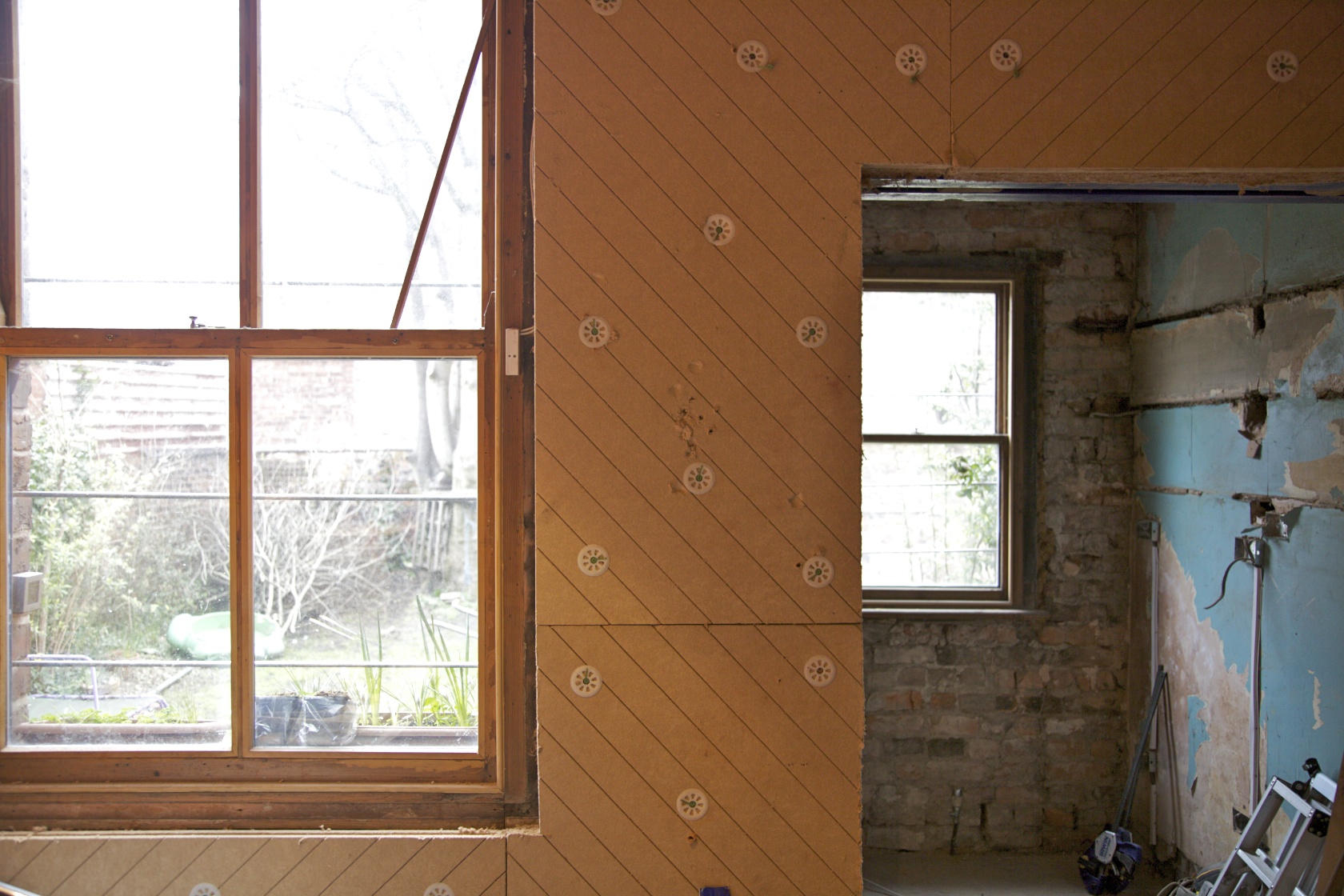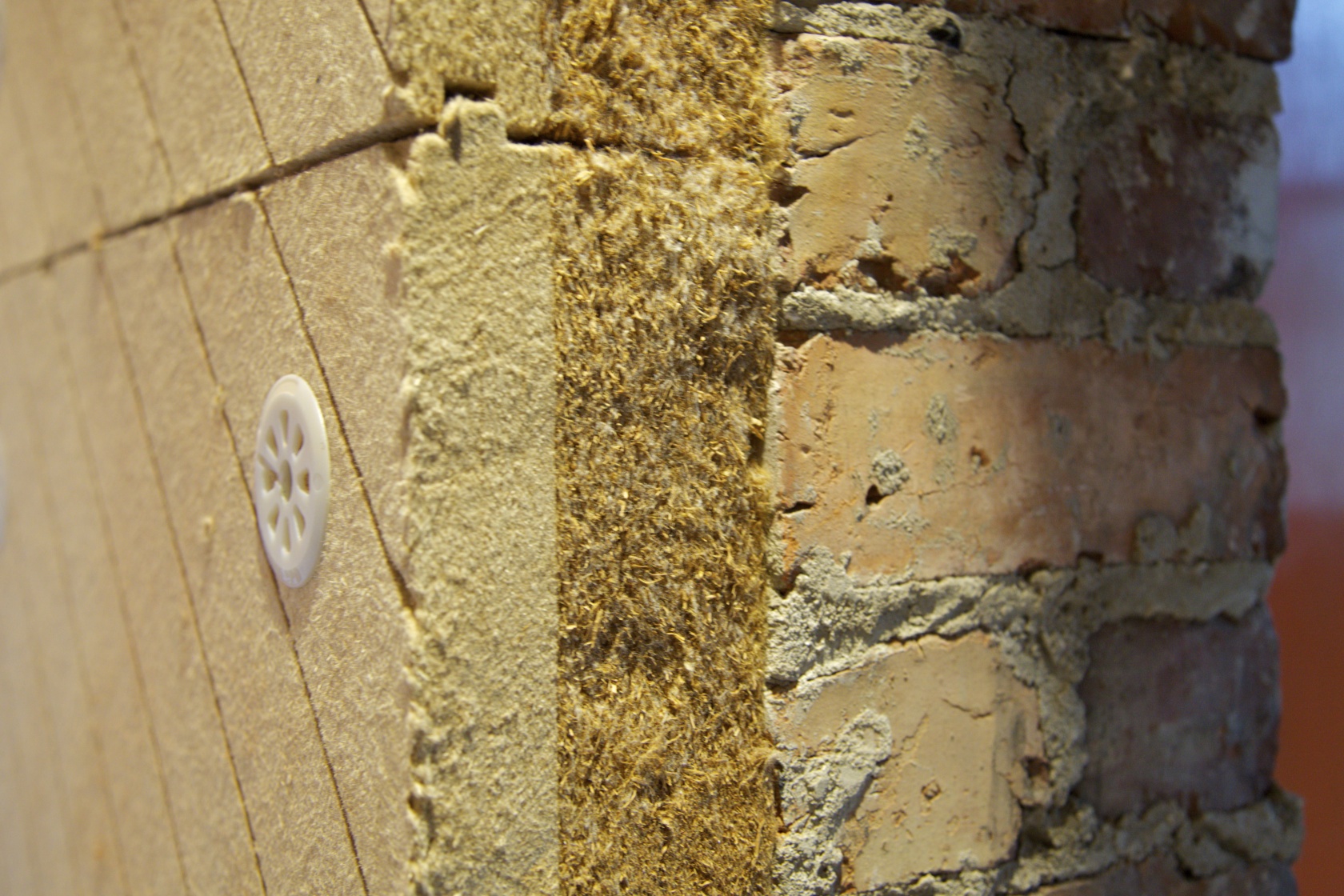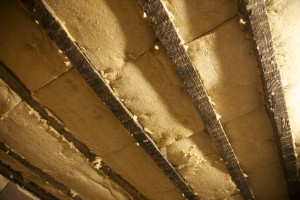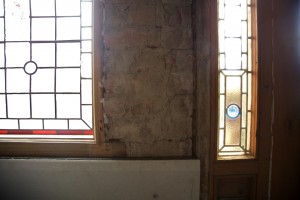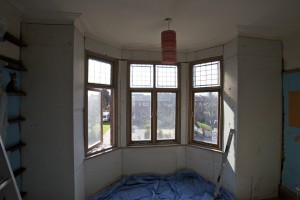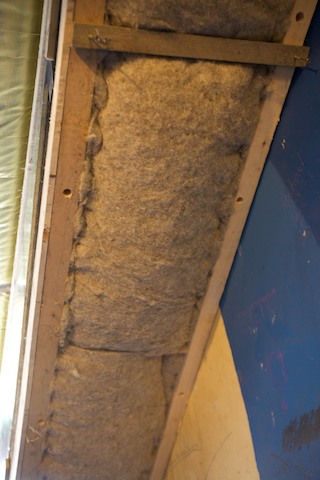Gable wall – external ly insulated – Udireco rendered 170mm recycled woodfibre. Front and back walls – internally insulated (bought but not yet fitted) 27mm Spacetherm glued to Fermacel board. Outrigger – tbc.
This took ages to work out, trying to marry up recyclability with embodied energy and while avoiding pervasive toxins, environmental degradation and derivatives of fossil fuels. Originally we were going to use Foamglas externally on the gable and internally on the front and back but the price was very high for what it is, and while the product is recycled, it is from a very high grade feedstock. Also this would have meant the whole house became entirely vapour sealed which splits commentators as to how bad this is.
External
Once deciding on breathability as key there are very few choices – mineral wool or wood fibre with either lime or diffusion open polymer render. They are pretty closely matched on embodied energy and toxicity. The tip to the balance was from sequestered carbon, the benign properties of wood fibre over glass, and UDI’s sustainability efforts through the entire product – glues, etc combined with the service from them and their UK agents Back to Earth. This produced a U-value of 0.2W/m/K
Internal
Breathable internal insulation is not advised here in the UK, internal insulation can cause issue anyway as the internal surface of the brickwork under the insulation will most likely be below dewpoint for much of the year so any water vapour there will turn into water so the strategies deployed are usually to prevent it getting there in the first place or ventilating the space between the lining and the masonry.
Add to this the fact that we want to keep the original plasterwork details – nothing spectacular, but part of the character of the place and our choices are very limited. The plaster is quite deep so we’ve got about 40mm to play with. The desire to avoid fossil fuels and foams becomes a prohibition internally as most of these materials would add considerably to the toxic load in a fire. Spacetherm uses aerogel impregnated into a mat, glued to a board it has the highest insulating properties after vacuum insulating panels – 0.13 W/m2/K and while high in embodied energy very little is used it is non toxic and enabels the walls to reach a U-value of 0.38 without thickening the wall. Its key disadvantage is cost, but it can be fixed directly to the wall with no framing or glueing so the cost of the material should be offset by the ease of installation. The boards have a built in vapour barrier and the mat itself is hygrophobic so with so little space in which vapour can gather the problem of interstitial condensation should be minimised.
The price of the Spacetherm is so high that where there are no plaster details left and window reveals can be adapted there is still room for another solution. As this is a pilot the intention is to try out a breathing internal wall insulation. There are 2 wood fibre solutions out there.
